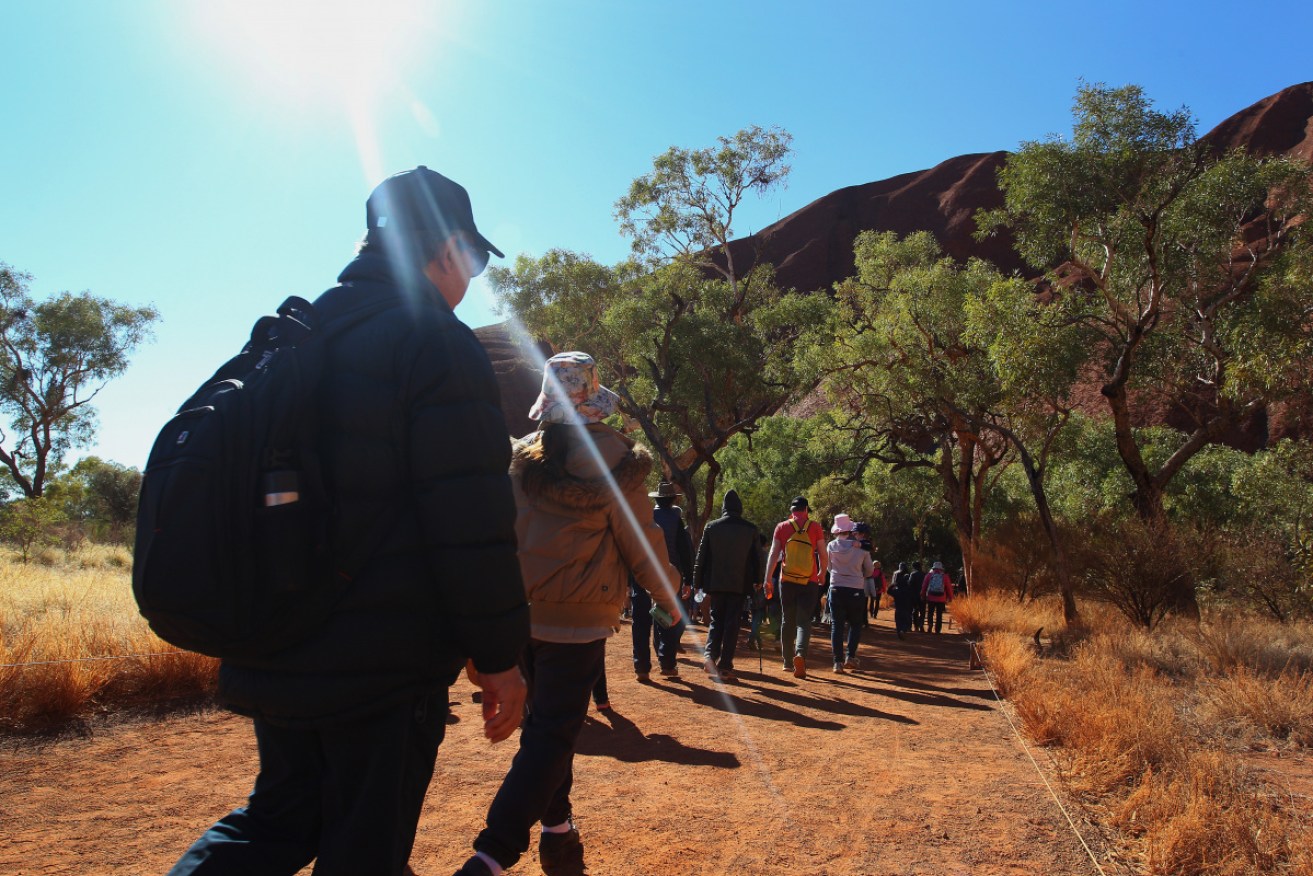It’s right to ban tourists from climbing Uluru. This is why


For years, tourists have been asked not to climb Uluru for cultural and safety reasons. Photo: Getty
For years I’ve been saying it to friends and fellow travellers: Climbing Uluru is one of the shallowest, most unrewarding experiences in Australian tourism.
I know because I’ve done it twice.
The first time, in the 1970s, I was stunned by how difficult it was and shocked by the plaques at the start memorialising those who have died climbing.
One of the first was, like me at the time, a school student on an excursion – he’d fallen after being disoriented in fog.
Back then I got to the top and realised it was a hollow reward.
Yes, you get a sense of how immense and surprising this monolith is when you stand atop it, but it’s far more powerful appreciated from ground level.
Since the traditional owners and park operators announced the rock will be closed to climbers from October 26 this year, thousands of tourists have clogged the hour-plus climb for their Instagrammable moment on the top, the worst of them leaving trash, pocketing pieces as souvenirs, and urinating up there.
This is despite Parks Australia long imploring travellers to “please don’t climb” the World Heritage-listed Uluru, which UNESCO cites as forming “part of the traditional belief system of one of the oldest human societies in the world”.
If that’s not enough to discourage you from clambering all over it, Parks Australia says the climb “can be physically dangerous” and that walkers are actually damaging the rock.

A photograph of hordes of tourists climbing Uluru, sent to ABC, angered the community last week. Photo: Facebook
Listen to the experience of a Sydney traveller who visited last year: “I watched with utter disgust as families encouraged their tiny children to scramble up in sneakers. One guy was setting off in footy shorts and thongs. There were hundreds and hundreds of people and I thought, ‘You are all mad’. Even if you didn’t think of it as plain insensitive, it just felt tacky that people feel they have to climb.”
Her impression was underlined by the fact that someone died climbing the day after her visit.
Visiting New Yorkers were surprised they even had the option, commenting: “It’s a bit like abseiling on Notre Dame, isn’t it?”
Last year, a family we know made the pilgrimage by car from Melbourne specifically to climb Uluru before it closed.
Travellers I’ve spoken to have been appalled to see the chain handrail hammered into the steep first ascent, and the path worn into the rockface by generations of tourists.
Others have been more surprised about how challenging the climb is, how exposed they felt, and the absence of facilities on the rock.
I recall, despite being fit and in my teens and 20s on my visits, I did some of it on all fours.
There is neither water nor toilets on the climb, which creates other problems with climbers wandering off paths to relieve themselves on the rock many times a day.
In recent years, the majority of travellers have heeded the government’s advice not to climb.
The traditional owners, who have leased Uluru-Kata Tjuta to Parks Australia for 99 years since winning native title in 1985, agreed climbing would be banned when fewer than 20 per cent of travellers visiting the area chose to ascend Uluru.
That occurred, and triggered the decision 18 months ago.
If the risks, (an estimated 37 deaths since the 1950s) and difficulty hadn’t already convinced me that climbing it was one of travel’s less intelligent decisions, a conversation decades ago with the then chief ranger did.
He told me the Uluru’s traditional owners, the Anangu people, “preferred” it if tourists didn’t climb.
The gentleness of this sentiment made climbing a choice for every traveller.
Then and there I chose never to do it again, and on subsequent visits I’ve taken much more rewarding paths through this extraordinary country, and urged friends, family and fellow travellers to do the same.
Anyone who won’t make it by the October 26 climbing ban shouldn’t be disappointed: You’re missing nothing but the chance to experience Uluru in a dozen other more rewarding ways.
Start with the 10-kilometre circuit of Uluru’s base. You may even have sections of the path to yourself.
Then head out to Kata Tjuta for the three-to-four-hour Valley of the Winds walk. Both are among the highlights of decades of travel for me. And just as Instagrammable as any climb.








